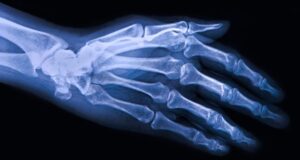
The provision of just 1% more green space in the most deprived urban neighborhoods in 3 out of the 4 UK nations may be linked to around 40% fewer preventable deaths in these areas, finds research published online in the Journal of Epidemiology & Community Health.
Green space is unequally distributed in England, Scotland, and Northern Ireland, with the lowest amounts in the most deprived areas, the findings show, prompting the researchers to suggest that green space investment might be an important public health strategy for tackling health inequalities.
Spending time in green space, such as grassland, woodland, and parks, is not only associated with lower rates of death and ill health, and improved wellbeing, but also with environmental benefits, note the researchers.
In Europe, access to green space tends to be poorer in areas of deprivation. But data on the distribution of these spaces in disadvantaged urban neighbourhoods across the UK isn’t known, they add.
The researchers therefore wanted to investigate inequalities in the distribution of green space in both urban and rural areas (for comparison); and the association between its availability and numbers of preventable deaths in urban neighbourhoods in all 4 UK nations, stratified by level of deprivation.
They drew on local authority data, national statistics, the Index of Multiple Deprivation, and national land survey data, to calculate: the percentage of green space in urban and rural areas; population size and density; deprivation levels; and deaths from preventable causes-;those that could be avoided through effective public health and primary prevention interventions.
They included 6791 defined geographical areas in England; 410 in Wales; 1279 in Scotland; and 890 in Northern Ireland.
The average percentage of green space was highest in Wales (45%), followed by Northern Ireland (24%), England (21%), and Scotland (16%). In all 4 countries, the average percentage of total green space in urban areas was significantly lower than that of rural areas.
Of the 4 nations, only in Wales was green space distributed equitably across neighbourhoods with differing levels of deprivation in both urban and rural areas.
In the other 3, the amount of green space was significantly associated with the number of preventable deaths among the most deprived urban areas.
In England, every 1% increase in green space in a defined geographical area was associated with 37% fewer annual preventable deaths.
In Scotland and Northern Ireland, a 1% increase in green space in a defined geographical area was associated with 37% and 41% fewer preventable deaths, respectively, over a period of 5 years.
“With the known health benefits of green space, this discrepancy may help to explain the wide health inequalities in urban areas in which the poorest and most vulnerable are most impacted,” suggest the researchers.
This is an observational study, precluding firm conclusions to be drawn about causal factors, and the researchers point to various limitations to their findings. These include assumed social and financial homogeneity of the geographical areas studied and the use of ‘land cover’ rather than ‘land use’ data.
“The unequal distribution of [green space] in urban areas demonstrates the need to target interventions at more deprived urban areas. Studies have shown that [green space] brings about greater benefit to those of lower socioeconomic position than those who belong to the more privileged groups, particularly in mental health and social integration,” they add.
“Although the study results show the association between lower number of preventable deaths and higher percentage of [green space] area, investment should not solely focus on increasing the existence of [green space] but also on [its] accessibility and quality,” they caution.
Source:
Journal reference:
Ngan, T. T., et al. (2024). Inequality in green space distribution and its association with preventable deaths across urban neighbourhoods in the UK, stratified by Index of Multiple Deprivation. Journal of Epidemiology & Community Health. doi.org/10.1136/jech-2024-222485.




